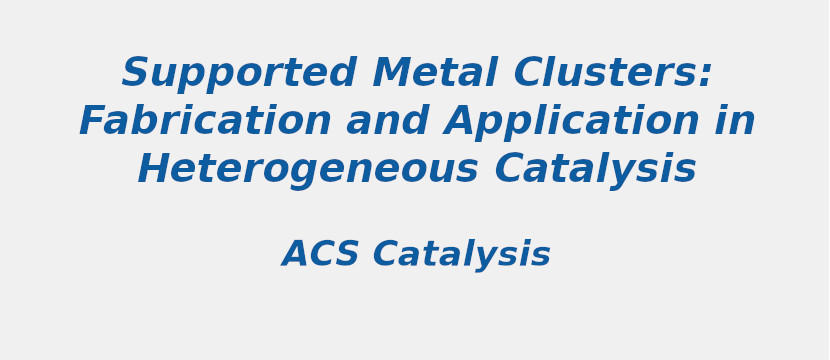Research Area: Machine Learning
Different from isolated metal atoms and large metal nanoparticles (NPs), supported metal clusters (SMCs) possess distinct geometric and electronic structures and thus exhibit enhanced activity and designated selectivity in catalysis. So far, with the development in synthetic methodologies and characterization techniques, SMCs with fine structures could be constructed and well-defined at the atomic level. In addition, based on computational modeling of SMCs, theoretical calculations corroborated well with experimental results, providing in-depth insights into the structure–property relationship for SMCs in catalysis. In this Review, classic synthetic strategies and key characterization techniques of SMCs are summarized. Subsequently, the applications of SMCs in important catalytic reactions based on recent studies are discussed, including aerobic oxidation, hydrogenation, dehydrogenation, water–gas shift (WGS) reaction, and photocatalytic reactions. In particular, the importance of the cluster size-effect and metal–support interactions in determining the catalytic performance of SMCs is highlighted. Lastly, challenges and prospects in SMCs catalysis are illustrated.
Keywords:
Metal clusters
Support
Size-effect
Synthesis
Characterization
Heterogeneous catalysis
Author(s) Name: Chunyang Dong, Yinlong Li, Danyang Cheng, Mengtao Zhang, Jinjia Liu, Yang-Gang Wang, Dequan Xiao, and Ding Ma
Journal name:
Conferrence name:
Publisher name: American Chemical Society
DOI: 10.1021/acscatal.0c02818
Volume Information:
